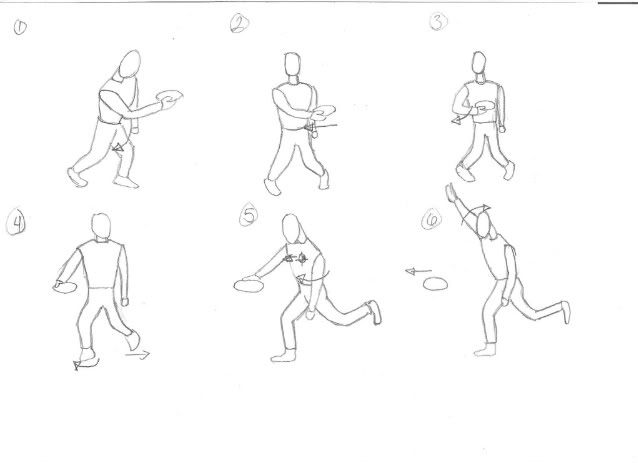mjdepue
Birdie Member
Background:
I've been playing disc golf for 7 years or so, the last 5 RHBH. I've plateaued around 400' on disc golf lines. Ever since Breaking 350' I've struggled consistently with release angles. Anytime I throw above 60% power, I almost always release the disc 10-30 degrees off to the right. Sometimes, when I grip-lock and release right, it's more like 45...but that's a different issue...
However, all off my longest throws, with the most snap, all occur 10-30 degrees off to the right. In open fields I've thrown well beyond 400' but always off to the right. If I focus on releasing straight I lose 50-100' of distance. Obviously throwing a controlled shot will result in loss of distance compared to a pure distance throw, but I'm getting the lines out of the disc I want, just not in the right direction...
I've tried a number of things to remedy this: starting off the tee-pad to the right, changing grips, focusing on arm extension forward and not around...but nothing actually worked.
I took some video footage of me driving (which I unfortunately can't upload until I get a hold of a Firewire800 cable) and watched it and noticed a few things. My reach-back isn't so much of a reach-back as it is me slowly swinging the disc out and around from front to back. I'm relatively flat footed throughout.
Today I did some field work trying to stay on the balls of my feet and actually reach straight back with mixed results. However, I was still realeasing a lot of them off to the right or, oddly enough, too early (left) with unintentional hyzer. My wife was with me and said that my torso was coming through very early. So I intentionally tried to stop my torso rotation, while still leading with my hips once it was squared up during the beginning of the pull through to the hit.
It took some getting used to, but I had a couple of decent throws that I released right on line. I still wasn't getting the snap I had before, but I was close a couple of times, so I might just need more practice.
I'm not a very big guy, but from baseball and other sports I've learned to make use of my core and legs to generate power. But this means I need to have my technique down well because I can't just compensate by relying on upper-body strength.
TL;DR
My question is where should the torso be in terms of rotation at the hit? I know it should come through after the hips, but does the disc/hand lead it as well?
Also, if you read the above, is there something else that might be causing the late release? I'm sorry I can't post the video, but if you have an idea let me know and I can look for it in the video.
I've been playing disc golf for 7 years or so, the last 5 RHBH. I've plateaued around 400' on disc golf lines. Ever since Breaking 350' I've struggled consistently with release angles. Anytime I throw above 60% power, I almost always release the disc 10-30 degrees off to the right. Sometimes, when I grip-lock and release right, it's more like 45...but that's a different issue...
However, all off my longest throws, with the most snap, all occur 10-30 degrees off to the right. In open fields I've thrown well beyond 400' but always off to the right. If I focus on releasing straight I lose 50-100' of distance. Obviously throwing a controlled shot will result in loss of distance compared to a pure distance throw, but I'm getting the lines out of the disc I want, just not in the right direction...
I've tried a number of things to remedy this: starting off the tee-pad to the right, changing grips, focusing on arm extension forward and not around...but nothing actually worked.
I took some video footage of me driving (which I unfortunately can't upload until I get a hold of a Firewire800 cable) and watched it and noticed a few things. My reach-back isn't so much of a reach-back as it is me slowly swinging the disc out and around from front to back. I'm relatively flat footed throughout.
Today I did some field work trying to stay on the balls of my feet and actually reach straight back with mixed results. However, I was still realeasing a lot of them off to the right or, oddly enough, too early (left) with unintentional hyzer. My wife was with me and said that my torso was coming through very early. So I intentionally tried to stop my torso rotation, while still leading with my hips once it was squared up during the beginning of the pull through to the hit.
It took some getting used to, but I had a couple of decent throws that I released right on line. I still wasn't getting the snap I had before, but I was close a couple of times, so I might just need more practice.
I'm not a very big guy, but from baseball and other sports I've learned to make use of my core and legs to generate power. But this means I need to have my technique down well because I can't just compensate by relying on upper-body strength.
TL;DR
My question is where should the torso be in terms of rotation at the hit? I know it should come through after the hips, but does the disc/hand lead it as well?
Also, if you read the above, is there something else that might be causing the late release? I'm sorry I can't post the video, but if you have an idea let me know and I can look for it in the video.

